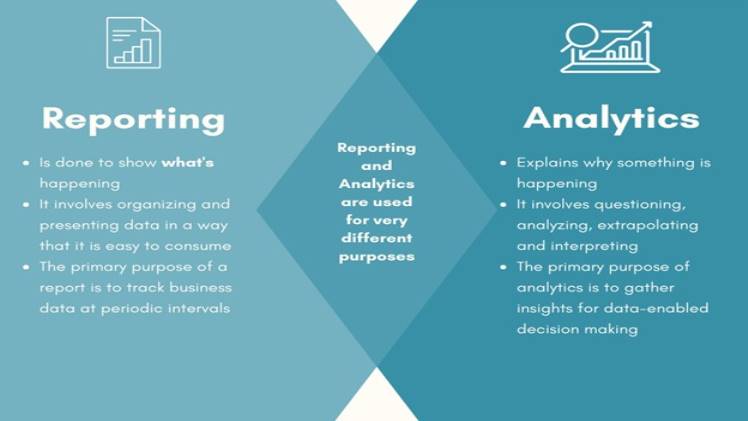The Difference Between Reporting and Analytics

Reporting and Analytics are critical elements in the business world. They enable companies to keep tabs on their operations and assess how well they’re doing. Furthermore, reporting and analytics can be employed for problem identification and resolution; however, if not understood properly, may prove confusing.
The Distinction Between Reporting and Analytics
Though often used interchangeably, reporting and analytics are distinct types of analysis that require different approaches and techniques.
Reports provide information about an event, while analytics search for patterns and trends in data. This allows analysts to recognize new business opportunities and suggest solutions that management can use to enhance their company’s performance.
Marketing Analytics and Reporting
The marketing industry is full of analytics tools that are employed to detect customer behavior, monitor product popularity, and other aspects. These insights assist marketers in optimizing campaigns and making wiser decisions. Furthermore, these figures may assist business owners and decision-makers determine whether their efforts are successful or not.
These tools are invaluable for both small and large companies alike. They can assist in determining the ideal time to market and finding the most cost-effective way to reach customers.
They can also be employed to monitor a business’s overall performance, pinpointing key areas that need improvement or optimization. With this data, executives can plan the next phase of growth for their organization and construct an achievable roadmap to success.
Analytical data allows businesses to make informed decisions based on their information, giving them a competitive edge over competitors. It not only attracts new customers but also keeps existing ones happy.
All businesses must have an effective analytics strategy and manage their business information effectively. Doing so will enable them to make more informed decisions, boost profits, and enhance productivity.
Analyzing data is known as analytics, and it involves asking questions, inspecting, comparing, and interpreting the outcomes. Analysts may even use big data to predict future trends or behaviors.
These analytical processes can be conducted on raw data from multiple sources or on a company’s internal systems, such as CRM and ERP software. Furthermore, they may incorporate traditional analytical techniques with more modern technologies like artificial intelligence (AI), machine learning, and data mining.
Analytics in the marketing space encompass a range of tools that have distinct purposes. Predictive analytics and segmentation, for example, are two popular techniques that marketers can use to anticipate which products or services will sell most quickly or how customers will react to them.
Another type of analytics tool is predictive modeling. This technology enables businesses to anticipate customer behavior and sales trends, so they can better prepare for potential changes in the marketplace.
These tools are an integral part of the analytics process and can assist businesses in finding solutions to their most pressing business difficulties. Furthermore, they have the potential to predict outcomes or analyze data trends to spot potential business opportunities that may arise in the future.
By visiting Advertisementpro and Thedailyworld you can get more knowledge about multiple topics.
